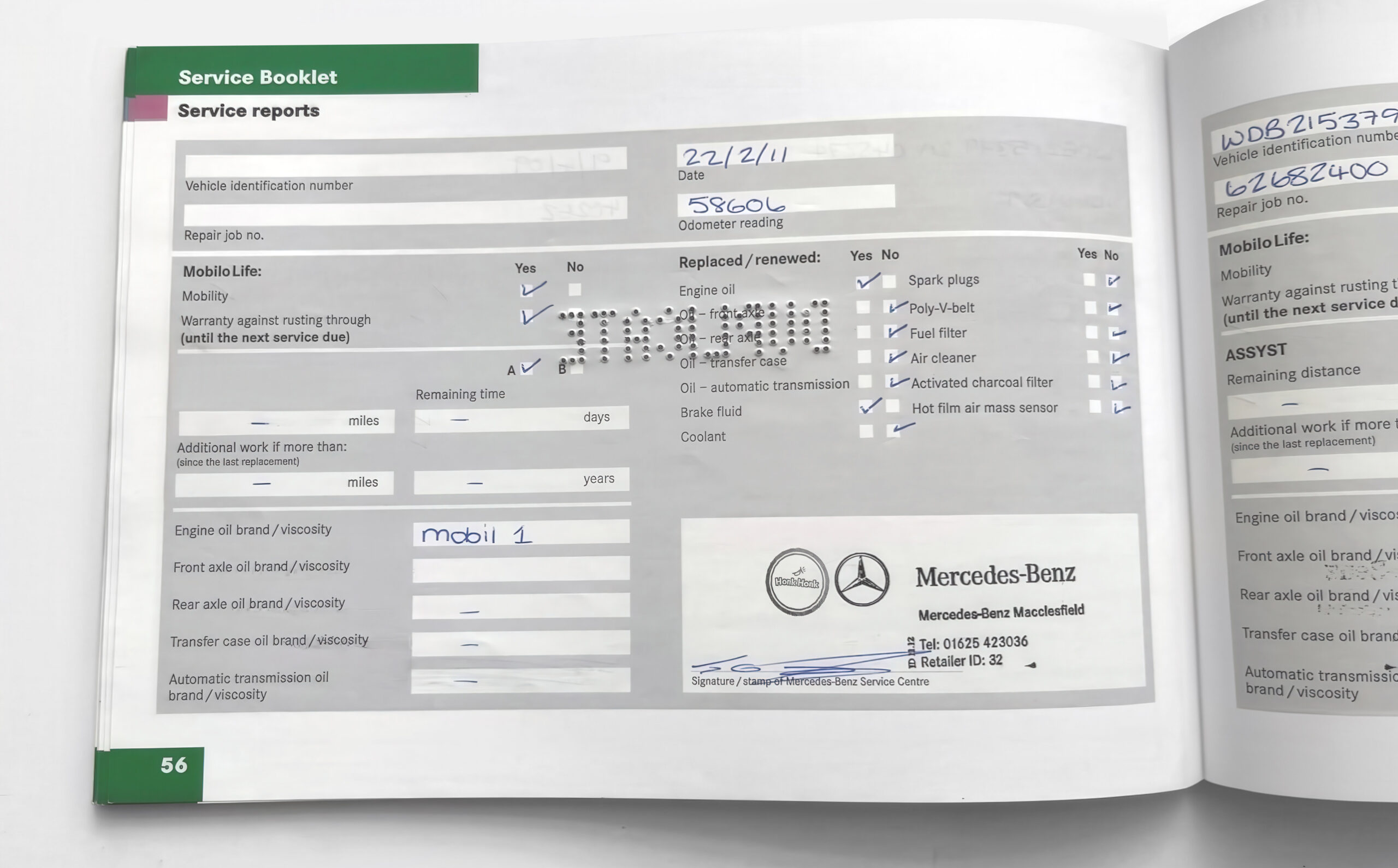
So, is the actual expense of owning a new car just about the petrol, the tax, or the insurance? Wrong. The biggest hit to your wallet is the money it sheds in value as it ages. But here’s the kicker: keep up with your car’s servicing and hang onto those receipts like your life depends on it, and you might get a tidy sum when it’s time to say goodbye to your motor.
What Is a Full Service History?
A car’s service history is a stack of papers showing whenever a mechanic has pampered and prodded a ceramic. This often comes with a little service book that gets stamped every time the car is serviced.
Potential buyers want to see this. It tells them the mileage is legit, the car’s been well looked after, and any dodgy bits have been sorted. If you’ve got meticulous service records, buyers will think you’re the kind of owner who cares – and that’s gold in the used car market.
Main Dealer Service History
Now, a main dealer service history is the crème de la crème. This means every work on your car has been done at the manufacturer’s official dealerships. Take a Toyota Yaris Cross, for instance. If it’s always been to a Toyota dealer, it’s like having a personal trainer rather than a gym membership—far more impressive.
This type of history screams, “No corners cut here!” and for good reason. Take Toyota’s video service tool, for example—it lets owners see a video of the servicing process. This level of transparency and thoroughness reassures everyone that the car’s been treated with the utmost care, using the best parts. Skip out on this; not only could your cheaper parts wear out quicker, but they might also mess with other components.
Manufacturers also roll out software updates and tweaks you’ll only get at their dealers. These little fixes can be crucial and can be done swiftly while your car’s car is in service. Go elsewhere, and you could miss out.
While you don’t have to go to a primary dealer to keep your warranty intact, having a main dealer history means smooth sailing if you ever need to make a claim.
How Service History Affects Car Value
Used car prices are mainly dictated by the ‘motor trade’. Dealers follow various price guides, but ultimately, their offers set the market value.
Cars without a service history are worth about 5 to 10% less than those with an entire service history. So, on a £25,000 car, that paperwork could be worth a cool £2,500.
Take the Volkswagen ID.3, for instance. In its first three years, central dealer servicing costs £750. After three years and 36,000 miles, it’s worth £20,000. Skimp on that servicing bill; you might lose £2,000 when selling.
‘Approved used’ schemes are another recent trend. A car needs an entire main dealer service history to get that approval. Without it, dealers offer less in part exchange because the vehicle won’t qualify for the scheme.
The value of a main dealer service history depends on the car’s age and type. Sports or luxury car buyers and those of upmarket brands will be especially keen on it.
What’s certain is this: a main dealer service history makes selling your car more manageable than having an independent service history.


